Ah, weary wee flipperling, curl at thy ease!
The storm shall not wake thee, nor shark overtake thee,
Asleep in the arms of the slow-swinging seas.
(Rudyard Kipling)
Some readers may object to my quoting Rudyard Kipling, known as the “Poet of Empire,” when discussing Irish affairs. But as I’ve written in previous newsletters, Ireland’s relationship to its marine environments continues to bear the scars of its colonial past. Historically, the seal populations in Ireland have escaped scientific consideration: as a 1966 paper in The Irish Naturalists’ Journal noted, 19th and early 20th century studies of seals in the British Isles “show that there has been confusion over identification, and almost no attempt to distinguish [between species] in Irish waters.” Indeed, Ireland did not consistently study its seal populations until mandated by the EU Habitats Directive about two decades ago. This was partially due to a lack of technology: Dr. Michelle Cronin, who appears to be the only seal scientist employed by an Irish university, noted in her 2007 study that previous research expeditions had been boat-based and thus “were susceptible to adverse weather conditions frequently encountered during the autumn breeding season.”
There are very few Ireland-based scientists who regularly consult with Seal Rescue Ireland, the Republic’s only seal rescue and rehabilitation group. Their organization is comprised of some 800 volunteers, numerous interns, and 3-5 permanent staff members. I was curious about the success of SRI’s efforts and was pleased to interview Lauren O’Brien, a former intern at SRI who’s now their Education and Fundraising Manager. We talked about community outreach, citizen science, climate change and more! Feel free to listen to the audio file above, or keep reading for a transcript of our conversation.
Overview
Diana: Would you mind telling us what kind of seals you guys are dealing with and how they make their way to Irish waters, or do they live in Irish waters?
Lauren: Yeah, of course. There are two types of seals native to Irish waters: grey seals and common seals (known as harbor seals in America). About 50% of the global grey seal population is native to Ireland and live around its small coastal islands. According to the most recent statistics, there's around 8-10,000 individual grey seals [living in Irish waters] and about 3-4,000 individual common seals.
D: What causes them to need rehabilitation by your organization? And how do you go about rehabilitating these seals?
L: Good question. We find that that they are threatened by many different things, the biggest of which is storms. Because of climate change, there's been an increase in storm frequency and the severity of those storms. And when there is a storm, seal pups are too small to be able to withstand the high wave action, so they’ll get thrown into sharp rocks and things. So they might come into us with various injuries from being in these storms. They are also affected by plastic pollution and overfishing. If there's a piece of plastic that sort of resembles a fish, because it's super shiny and they're very hungry, they might grab onto that, which is obviously very harmful. [Ingesting plastic] can cause mass [internal] blockages, which can be fatal. Also, we are rescuing seals more and more from polluted waters. Heavy metals, raw sewage, or any agricultural runoff weakens their immune system. Seals are very hardy and should be able to fight off diseases out in the wild, but because [chemical pollutants are] weakening their immune systems, they're less able to overcome these various parasites that they encounter. We find we have to intervene more and more.
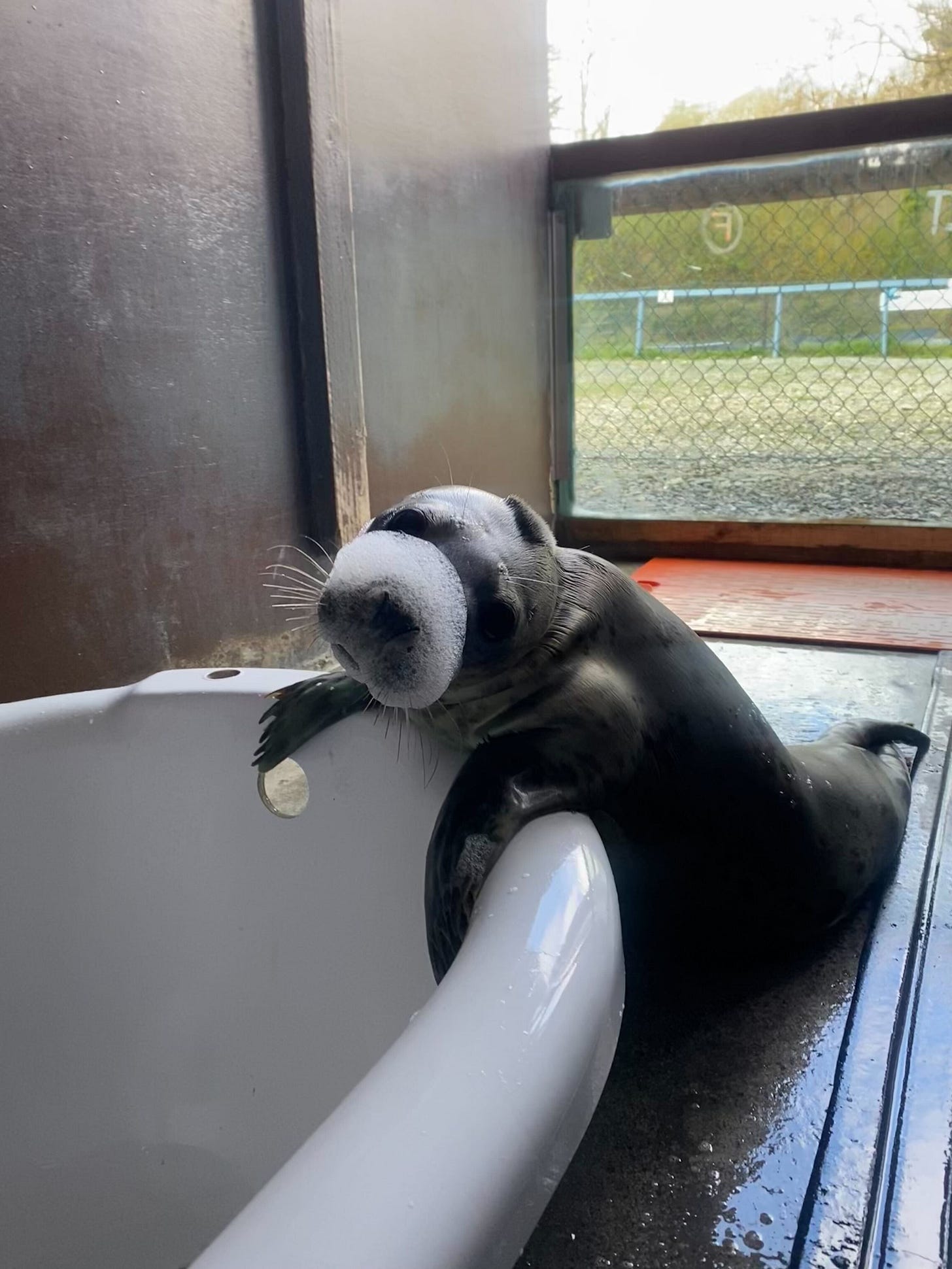
The seals are rescued by people from our volunteer network, which is about 800 people across Ireland. They're trained by us to be able to lift and transport a seal to us. When [the seals] first arrive, they go to an ICU unit (which is a small tub) where we conduct the clinical assessment: we go through their limbs and [examine] their body condition and assess the extent of their injuries and [determine] how we then go through with wound care if they need it.
D: And are there marine scientists or vets who go about doing the assessments?
L: It's member of the animal care team. We're a very small team –only three people, with the help of our interns. We have a local vet that we work with [who] can administer the medication to us. We recently had a seal that needed a tooth removed because it was becoming infected and very swollen, so it was hard for her to eat. We then took her to that local vet to be partially sedated so that that tooth could be removed. If it's very severe, we take them to University College Dublin because they just have better facilities to be able to handle an eye removal or a flipper removal or something.
D: Wow. That's amazing.
Volunteer network
D: You're based in County Wexford which, for people who don't know, is on the southeast coast of Ireland, but you said that there's 800 volunteers across the island. Are all seals transported to Wexford? And where are the 800 volunteers located?
L: They are all spread out across the whole country. A lot of them are on the coast, but a lot of them are inland as well. So if we rescue a seal up in Donegal (Donegal to Wexford and back is about an eight-hour journey), we wouldn't ask a volunteer to drive the whole way: we might ask them to drive an hour inland instead, where they'll meet someone else, another volunteer, who’ll drive another hour. That's why it's important we have volunteers in the middle of the country as well: it is a sort of relay race system to get the seal to us.
D: That's so fascinating. So then the seal is just in a little tub?
L: Yes, exactly. So then they just transfer –
D: – it to different cars.
L: Yeah. So we don't ask any of our volunteers to be touching the seals because they are wild animals. If they're scared and feel threatened, they will want to bite. [Volunteers] are trained to herd the seal into a dog cage or a kennel or a box crate that’s got sort of holes so that it can breathe, but it is quite dark just to help them calm down. Hopefully, you know, the volunteer has a big enough vehicle for that. We want [rescues] to be as stress-free as possible, so the least number of vehicles they can go in [the better].
Climate change?
D: Have you noticed that there's been a change in the frequency or number of seals that you've been rescuing over the years? I assume that you have busy seasons or busy months. Have those been getting busier because of environmental changes?
L: Yeah definitely. The biggest number of rescues we have done ever in our 14 years of existence was in 2023 (last year) where we rescued 172 seals. I think a lot of that [increase] is to do with our outreach: when [people] know more about us, they're more likely to let us know if there is a seal in need. But [the spike] is also definitely to do with climate change and plastic pollution and everything that I mentioned earlier. A lot of storms tend to happen at the beginning of pupping seasons as well, which is when [seals] are most small and vulnerable and weak.

D: Is pupping season in the summertime or late summertime?
L: So it’s different for both types of seals. With the common seals, it is the summertime (July, August) and then for the gray seals, it's more autumn, winter (September-December). There are much fewer rescues until around mid-July. But in 2017, because of Storm Ophelia, 66 pups had to come into our care [which is] 11 over capacity.
D: So what did you do? How did you make room for them?
L: Well, you don't want to be turning them away, of course. We were doubling up on the facilities, which isn't normally an issue. They're [normally] solitary animals, but pups are going to be in close proximity with each other for safety reasons. We also asked [our volunteers] to help out with the animal care as well as our regular interns.
D: Wow. So then, the biggest threat as you were saying is from the increasing severity and frequency of these storms?
L: I mean, it's hard to say which one's sort of the biggest threat because all of them kind of interlink with one another. It's normally a combination because when there's storms, even if they don't get injured, maybe they get separated from their mom and they're orphaned too early on. It depends on the time of year – even though it's quieter from January to march a lot of them are coming in with lungworm. I don't know if [the disease] is just more abundant in the cold months of the year or what.
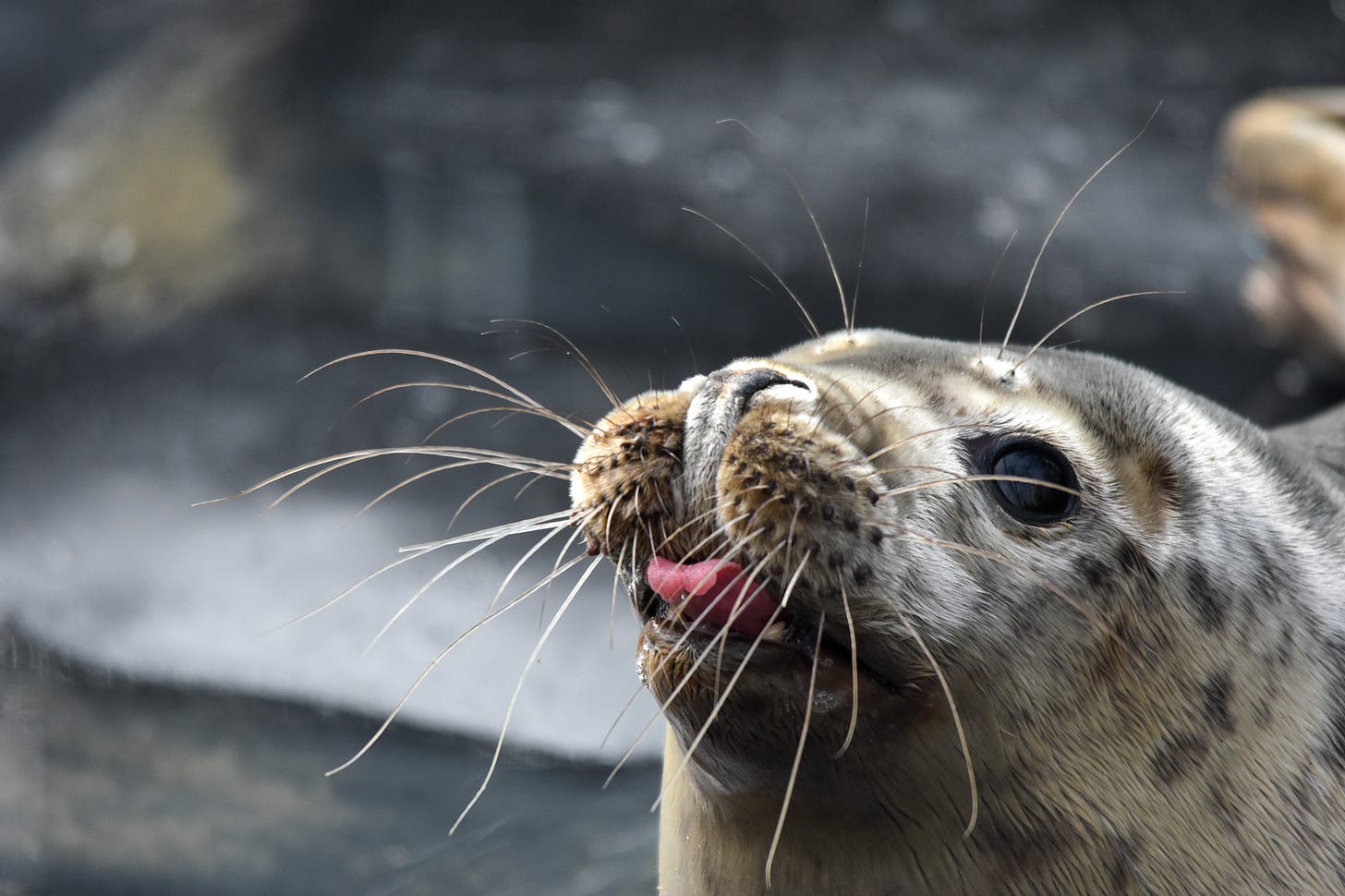
What I've also noticed is that climate change has sort of changed [the timing of] pupping season. Grey seal pups should be born in September; the last couple of years, we've had grey seal pups being as born as early the beginning of August, which is a nightmare because the beaches in Ireland are packed in August.
D: Especially in Wexford, right? I've heard that it’s a very popular beach destination.
L: Yeah, literally anywhere in Ireland, as soon as there's sun, people are like, “let's go to the beach!” But I don't know if [climate change] is affecting gestation period in the seals or if they just are mating earlier. It's a bit weird, not just for pups, but changes in the weather [confuse] all sorts of animals as well as plants. Seals go through a molt once a year, which is generally January, February time (for grey seals), and lately their molting is affected as well. I used to work over in Cornwall [England], and although it should be once a year, we had a [seal] going through a molt two or three times a year because the weather was confusing them.
D: Is molting when they shed layers of skin? Or is kind of like how dogs shed?
L: So they still have their blubber and layer of skin but are shedding that fur coat and growing a new one. Molting is a lot of stress on their systems: they barely eat for three or four weeks and don't really go in the water. So if they're going through it more than once a year, that's impacting their overall health.
D: Gotcha. So it messes up their internal time clock.
L: Exactly. I know there isn't much research into it, especially with seals, but with sea lions in the U.S. [scientists] have found that climate change has increased the number of harmful algal blooms, which has been really toxic to [pups]. I don't think there's much research into how [HABs] affect seals and I personally would like to learn more.
Relationship with the scientific community
D: Seals are such complex little mammals, so I find it interesting that there's not always a ton of research done on them. Do any scientists, at University College Dublin or NUI Galway for example, ever partner with you? What's your relationship with the scientific community in Ireland?
L: We have had quite a few students come in to conduct various research. [They’ve] tested stool samples for certain substances or chemicals. When seals are in our care or residents in zoos and things, it might be a bit easier to conduct research [on them]. We also do a lot of research with wild seal populations as much as possible: during certain times of the year, we'll monitor sort of numbers and where they're giving birth. We keep track of dead seals across Ireland as well. Seals can migrate quite far and it’s quite hard to keep track of them. Obviously when they're in our care, we don't want to do anything to stress them out. We love to accommodate research that's more hands off because it’s so important to help improve practices on our end. We do have a great relationship with UCD. They conduct necropsies for us, so if a seal does pass away in our care, they can let us know what's going on. That way we can see if certain things arise at certain times of year.
D: That’s fascinating. I've written about some pieces about the state of marine science research in Ireland, and I feel like there's a lot of organizations like yourselves and other marine conservation groups that are doing really good work and super passionate but then a lot of people in academia are just not. A lot of scientists doing research [in Ireland] aren't necessarily using [those groups] as resources, which is disappointing.
L: Yeah, that is true. I know it's hard for students or researchers to be able to simply get involved with those groups because of them needing more [resources themselves]. But yeah, you are right. It can be difficult.
Outreach strategies
D: What is Seal Rescue Ireland's outreach strategy? How do you get new volunteers and teach people about your mission in Wexford and across Ireland?
L: Outreach and education are intrinsic to the animal care. We offer a lot of experiences on site for families or school groups or group tours for different communities. We want to be as accessible and affordable to people as possible. As well as the stuff on site we'll conduct community beach cleans or tree planting, and we try and go to as many [local] events as we can. At these events, we'll bring along our educational props (like seal skulls!) with us to get adults and children interested. That is how we have been able to engage with a lot of potential volunteers that then want to sign up to our network, which is amazing.
We hold various rescue network trainings around the country, and we'll offer virtual tours as sometimes school [groups] can't get to us. [We teach] the kids how they can get involved and encourage them to do their own projects in schools (upcycling, conducting beach cleans, etc.). And yeah, doing their little bit at home just to spark an interest in protect[ing] the marine environment and the general environment.
Our Earth Heroes program is great for kids for schools but is also accessible to anyone: it's online with free workbooks and an educational video series. Social media is super important to be able to engage with people in Ireland [and] around the world. The seals that we have in [our sanctuary] act as ambassadors for their entire species, so just through seeing them, people might be able to make a bit more of a connection with conservation and [want] to protect the marine environment.
Broader support
D: So what are the policies or actions that either local governments or the government of Ireland or even the EU could take that would help your rescue efforts?
L: So seals are [already] protected in Ireland under the EU Habitats Directive and the [Irish] Wildlife Act of 1976. So it is illegal to disrupt, touch, threaten any seal out in the wild, and I said earlier their numbers are pretty good now. In the early 1900s, the grey seal population was less than 500 individuals, but because of those laws and regulations, the seal population has been able to recover as well as it has done in Ireland. So there's a lot less hunting and disruption [of their habitats]. Furthermore, heightened awareness of seals’ habits has helped to protect them. People have learned that seals actually don't need to be in the water all the time, so if they're up on land, don't try and put them in the water as they're wild, they'll bite, leave them alone. They don't need your help.
D: So it seems like the laws are on your side – maybe you just need more volunteers and more funding so that you can expand your efforts?
L: Yeah, exactly. It's the same thing that so many charities are trying to accomplish, which is to slow down the rate of climate change and protect all animal species as well as the environment. Funding is obviously a big thing as well: we are a nonprofit charity and rely mostly on funding from doing experiences (tours, etc.) and donations. We get very little government funding. If we could have more people [act] as ambassadors for us, and being able to spread the word themselves, that would definitely help.
D: I know in recent years the Irish government has adopted a National Marine Planning Framework and has you launched Harnessing Our Ocean Wealth programs and basically saying they were going to commit to protecting the environment and [support] people who already do the work – has that not translated into an uptick in funding in recent years?
L: Government funding, I think, has stayed pretty much the same. But there are, I don't know whether it's to do with the government, more [sponsorships are being] offered by various businesses and other huge charities. Perhaps the government are supplying these corporations with more money to be able to offer grants for environmental issues that we can apply to.
And finally: why Wexford?
D: Last thing, I was just curious: Why did you guys choose Wexford as your home base?
L: We were in Dingle in [County] Kerry in 2010 and a storm blew down the site. Since we had seals in our care at that time, we needed a place that was already up and running, had pool facilities, access to water straight away. And this site in Courtown in [County] Wexford was available. It's great because we're an hour, hour and a half from Dublin, which is where a lot of people are. It’s great from an outreach perspective: people can visit us from all over. It’s a really great location.
D: Well thank you so much, Lauren, for your time today. This has been such an illuminating interview and I hope more people can visit you in Wexford or schedule virtual tours or donate to your organization. I hope that I can help get the word out about you guys.
L: Aw, that's amazing! Thank you so much.
To support Seal Rescue Ireland’s mission, consider adopting a seal or following them on social media. Other sources for this post are listed below:
Brown S.L., Bearhop S., Harrod C., McDonald R.A. “A review of spatial and temporal variation in grey and common seal diet in the United Kingdom and Ireland.” Journal of the Marine Biological Association of the United Kingdom, Volume 92, Issue 8, 2012, pp. 1711-1722. doi:10.1017/S0025315411002050. Accessed 8 May 2024.
Cronin, M.A. “The conservation of seals in Irish waters: How research informs policy.” Marine Policy, Volume 35, Issue 6, 2011, pp. 748-755. https://doi.org/10.1016/j.marpol.2011.01.006. Accessed 8 May 2024.
Lockley, R. M. “The Distribution of Grey and Common Seals on the Coasts of Ireland.” The Irish Naturalists’ Journal, vol. 15, no. 5, 1966, pp. 136–43. JSTOR, http://www.jstor.org/stable/25537005. Accessed 8 May 2024.


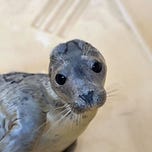


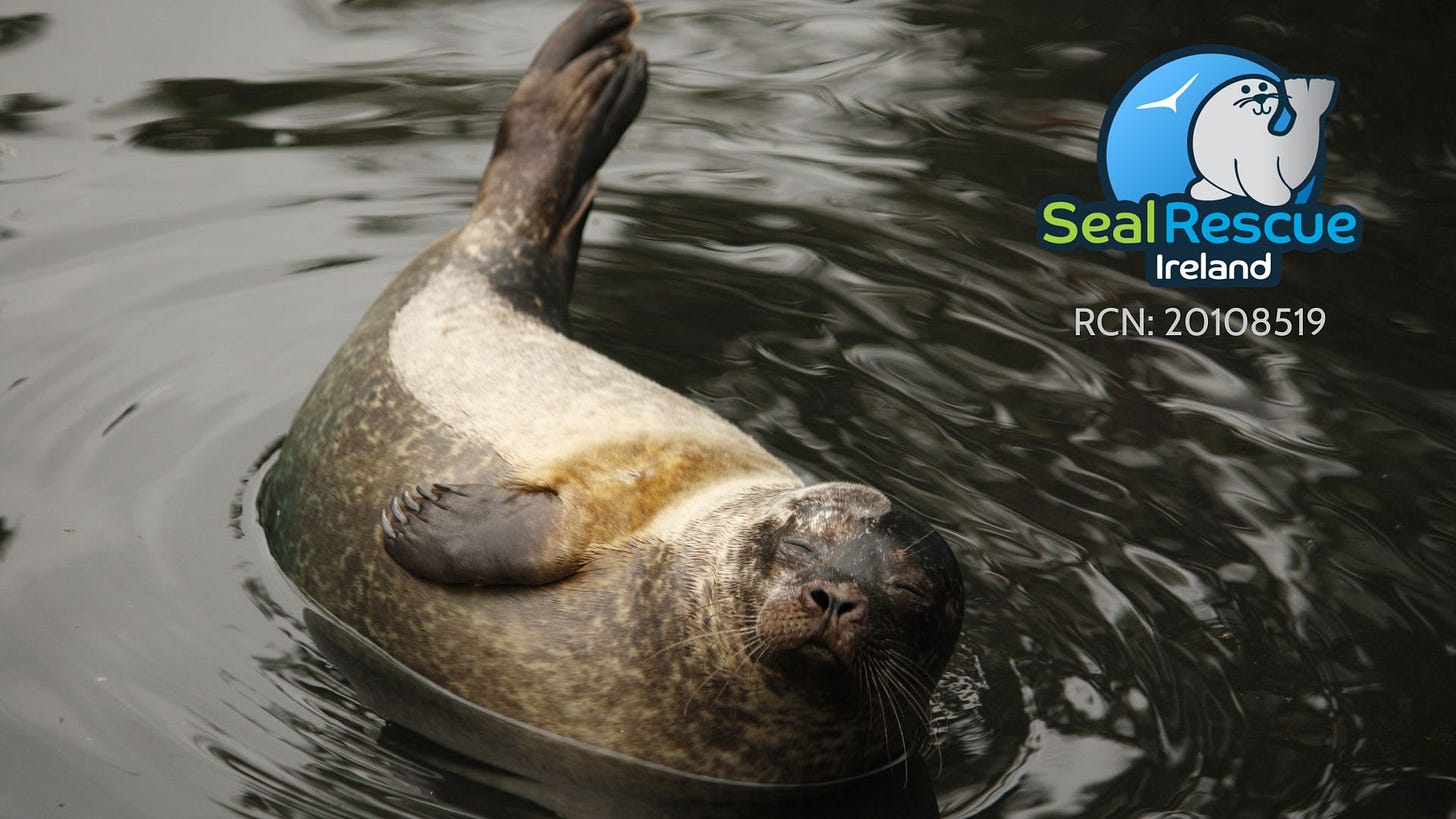

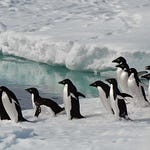
Share this post